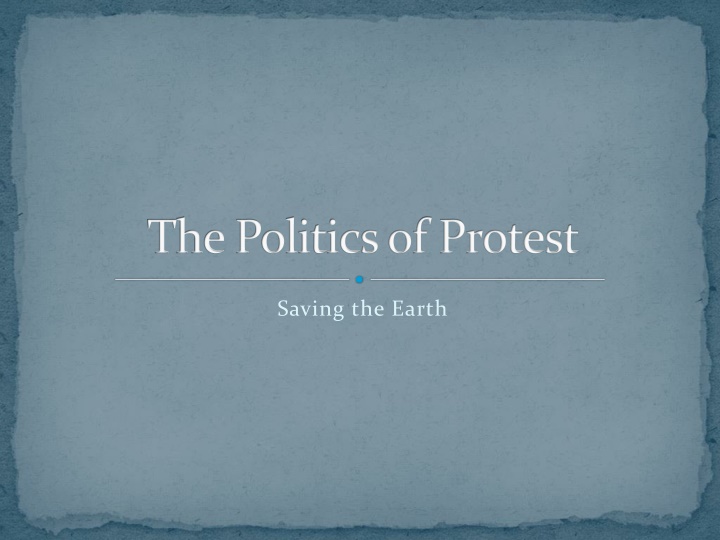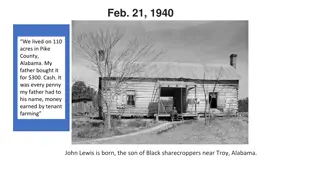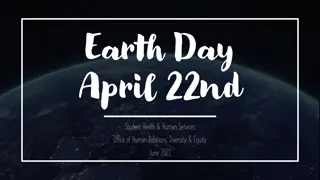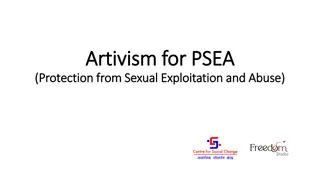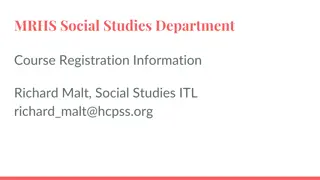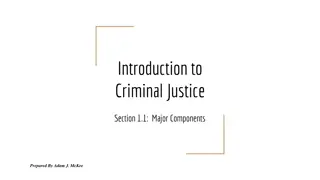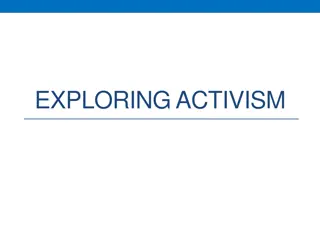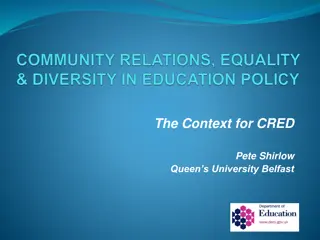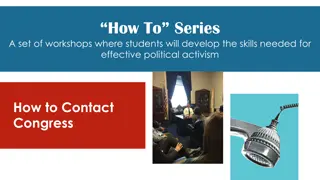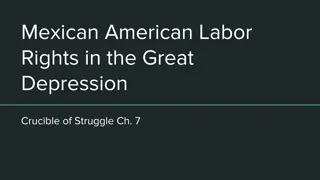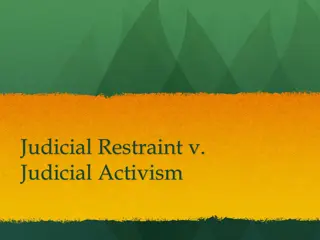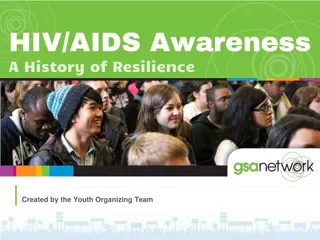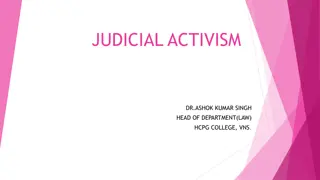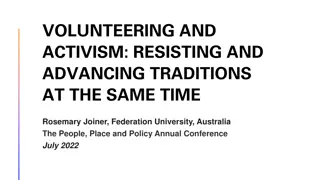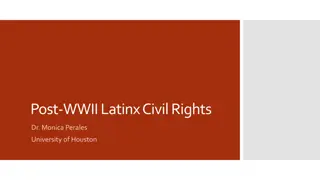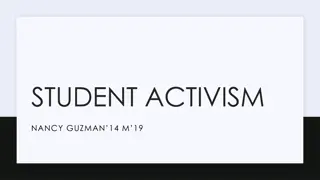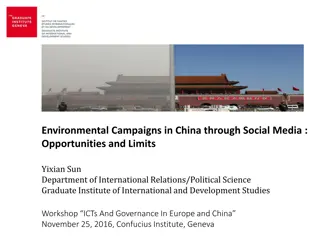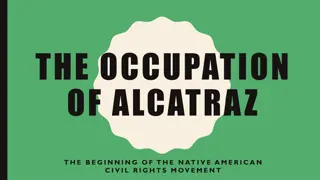The Evolution of Environmental Activism in the United States
The journey of environmental activism in the United States began with Rachel Carson's groundbreaking book "Silent Spring" in 1962, which raised awareness about the dangers of pesticides like DDT. This led to the establishment of organizations such as the Environmental Defense Fund and the celebration of Earth Day, marking a significant grassroots movement. The government also played a pivotal role by enacting laws like the National Environmental Policy Act and the Clean Air Act to address environmental concerns. Local initiatives like the Love Canal incident further highlighted the need for community action. Concerns over nuclear energy and the rise of the consumer protection movement also shaped the environmental landscape during this period.
Download Presentation

Please find below an Image/Link to download the presentation.
The content on the website is provided AS IS for your information and personal use only. It may not be sold, licensed, or shared on other websites without obtaining consent from the author.If you encounter any issues during the download, it is possible that the publisher has removed the file from their server.
You are allowed to download the files provided on this website for personal or commercial use, subject to the condition that they are used lawfully. All files are the property of their respective owners.
The content on the website is provided AS IS for your information and personal use only. It may not be sold, licensed, or shared on other websites without obtaining consent from the author.
E N D
Presentation Transcript
The Politics of Protest Saving the Earth
The Beginnings of Environmentalism Rachel Carson s 1962 book Silent Spring assailed the increasing use of pesticides, DDT. Curbed insect populations, they also killed birds, fish, and other creatures that might ingest them. Many Americans took Carson s warnings to heart and focused on environmental. Scientists established the Environmental defense Fund and used its contributions for a series of legal actions across the country to halt DDT spraying.
The Environmental Movement Blossoms A Grassroots Effort Begins Earth Day, a day devoted to addressing the country s environmental concern s. Senator Gaylord Nelson of Wisconsin, put forth the idea of an Earth Day celebration. After Earth Day, the grassroots effort intensified. In April 1970, activists started the Natural Resource Defense Council to coordinate a nationwide network of scientists, lawyers, and activists working on environmental problems Earth Day.
The Environmental Movement Blossoms The government Steps In Federal Government takes action. In 1970, President Nixon signed the National Environmental Policy Act, which created the Environmental Protection Agency (EPA). The clean air act became law in 1970 and established emissions standards for factories and automobiles. Congress passed two more pieces of environmental legislation. Over time these laws produced a dramatic improvement in some areas.
The Environmental Movement Blossoms Love Canal Americans continued to mobilize on the community level throughout the 1970s to help the environment. The residents soon learned that their community sat atop a decades-old toxic waste dump. Over time its hazardous contents had leaked into the ground. Led by Lois Gibbs, the residents joined together and demanded that the government take steps to address these health threats.
The Environmental Movement Blossoms Concerns Over Nuclear Energy Supporters of nuclear energy hailed it as a cleaner and less expensive alternative to fossil fuels, such as coal, oil, and natural gas. The accident at Three Mile Island had a powerful impact and left much of the public in great doubt about the safety of nuclear energy.
The Consumer Movement During the 1960 s and 1970 s, a number of citizens also questioned the quality and safety of the many new technologically advanced products flooding the market. The most notable figure of this new consumer protection movement was Ralph Nader. Unsafe at Any Speed, Nader charged car designers and manufacturers with putting style, cost, and speed ahead of safety. Nader s success led to calls for a closer examination of numerous other consumer goods during the 1960 s and 1970 s. Congress passed the National Traffic and Motor Vehicle safety Act in 1966 and for the first time set federal regulations for the automobile industry.
Essay Question Give arguments for both sides of the nuclear power debate. Then describe the event at Three Mile Island and its effects on the debate.
Essay Question and Answer Give arguments for both sides of the nuclear power debate. Then describe the event at Three Mile Island and its effects on the debate. Supporters of nuclear energy hailed it as a cleaner and less expensive alternative to fossil fuels, which have a limited supply. Opponents warned of the risks nuclear energy posed, in particular, the devastating consequences of an accidental radiation release into the air. An accident at Three Mile Island, a nuclear facility outside of Harrisburg, Pennsylvania, moved the debate to the nation s forefront. A reactor overheated after it s cooling system failed. As a result, low levels of radiation escaped from the reactor. Officials evacuated many near by residents, while others fled on their own. Citizens and community groups expressed outrage in protest rallies. Officials closed down the reactor and sealed the leak. The federal regulatory agency eventually declared the plant safe. Yet this accident had a powerful impact and left much of the public in great doubt about the safety of nuclear energy. Such doubts have continued. Since the Three Mile Island, 60 nuclear power plants have been shut down and no new facilities have been built since 1973.
Essay Question Three factors (Nuclear Arms Race, Baby Boom, 1950s Economic Prosperity) helped bring about the youth movement in the 1960s. Explain how the effects of these factors contributed to the movement.
Essay Question and Answer Three factors (Nuclear Arms Race, Baby Boom, 1950s Economic Prosperity) helped bring about the youth movement in the 1960s. Explain how the effects of these factors contributed to the movement. The nuclear arms race between the United States and Soviet Union made many of the nation s youth uneasy about their future. This concern led many young people to become more active in social causes, from the civil rights movement to President Kennedy s Peace Corps. As a result of the baby boom, a larger percentage of the American population was less than 34 years old in the 1960s than ever before. Because of the economic boom of the 1950s, many more facilities could afford to send their children to college, so enrollments soared in the 1960s. College life empowered young people with a new-found sense of freedom and independence. It also allowed them to meet and bond with others who shared their feelings about society and fears about the future. It was on the college campuses across the nation where the protest movements would rage the loudest.
